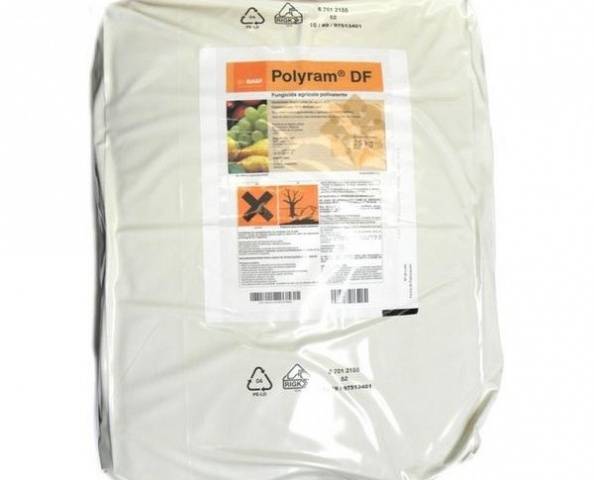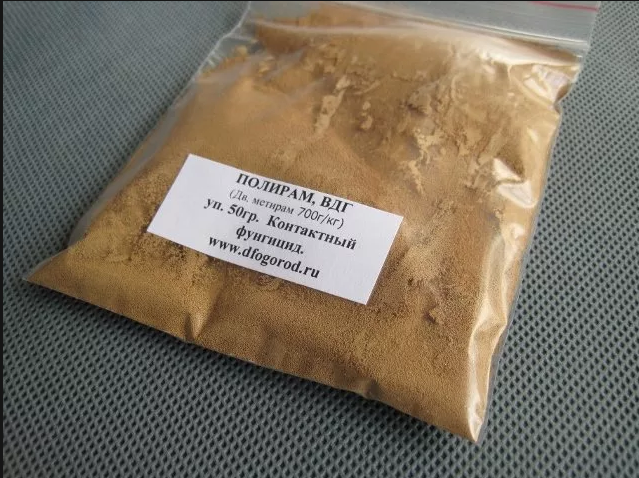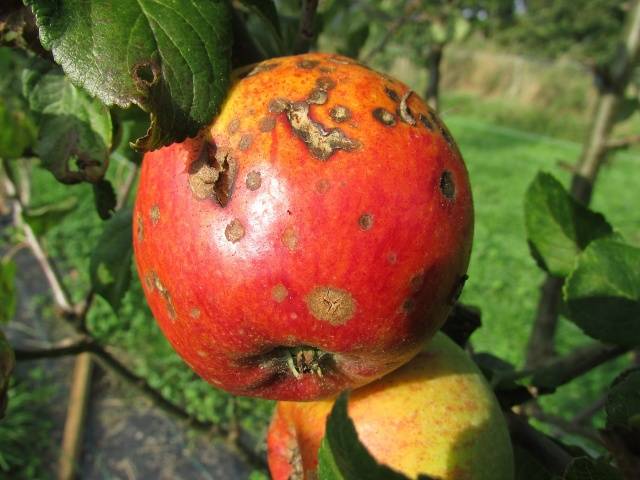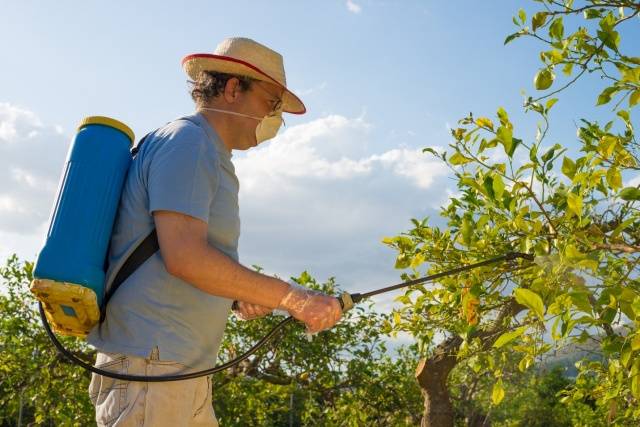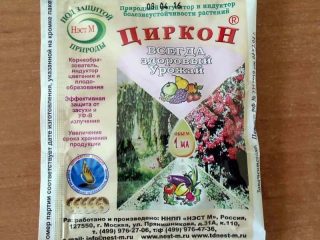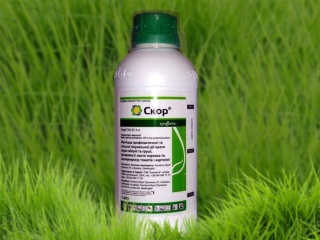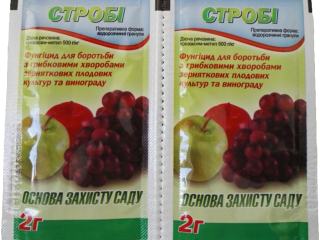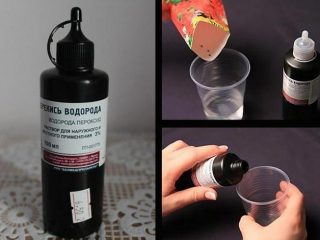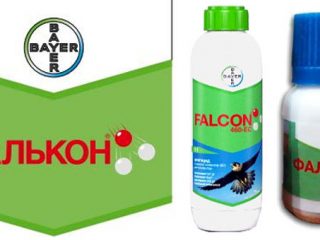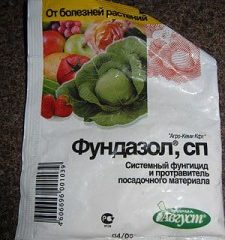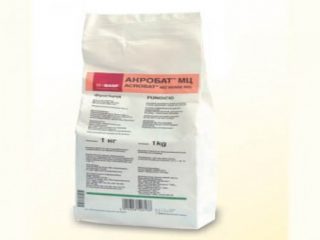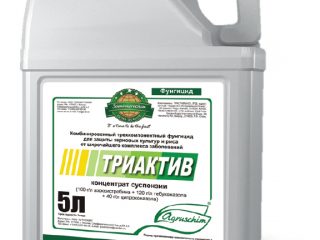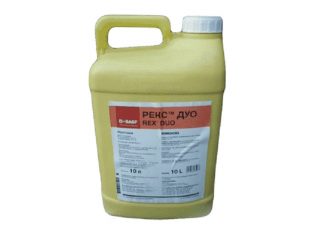Content
Long rains, dampness and fogs are favorable conditions for the appearance and reproduction of parasitic fungus. With the arrival of spring, the virus attacks young leaves and covers the entire plant. If the disease is neglected, you can lose almost the entire crop. Timely prevention is the best method of combating pathogenic fungi that affect shrubs and fruit trees.
Among gardeners, the fungicide Polyram, which has a wide range of applications, has gained confidence. Let's get acquainted with its features, instructions for use and reviews from summer residents.
Features of the fungicide
Fungicide Poliram is an effective contact drug that is used to prevent fungal infections. It is intended for fruit trees, grapes and vegetable crops.
Purpose and form of release
The drug protects plants from the following diseases:
- late blight (brown rot);
- mildew (downy mildew);
- rust;
- anthracnose (bitter rot);
- scab;
- various spotting (alternaria and septoria);
- peronosporosis (downy mildew).
The fungicide Poliram is produced in the form of water-soluble light brown granules, which are packaged in 1 and 5 kg plastic bags.Some online stores offer to purchase small bags of 50 and 250 g. The average price per kilogram of the substance is 1000 rubles.
If you were unable to find the fungicide Poliram on the market, you can purchase its analogues: Polycarbocin, Copper Oxide and Mancozeb. According to reviews from summer residents, they have similar properties.
Mechanism of action
The product belongs to the chemical group of dithiocarbamates. The active component of the drug is metiram, the concentration of which in dry matter is 70% or 700 g per kilogram. It has a strong effect on the vital processes of the parasitic fungus and interferes with the synthesis of enzymes. The active substance blocks the development and spread of pathogenic microorganisms.
Advantages
Like any drug, Poliram combines both advantages and disadvantages. Advantages of using a fungicide:
- does not have a toxic effect on the treated cultivated plants;
- can be used during budding and flowering;
- convenient and easy to use: granules dissolve quickly, are easy to dose and do not scatter in the air;
- due to the suppression of the enzyme system of fungi, the likelihood of their adaptation to the action of the fungicide is low;
- suitable for many crops;
- gives a quick effect.
Many summer residents prefer the drug Polyram.
Flaws
The negative qualities of a chemical product include:
- short period of exposure, protective properties are quickly lost;
- inconvenient packaging, can easily tear;
- uneconomical, higher consumption of substances compared to other drugs;
- not resistant to precipitation, as it has a surface effect;
- harmful to humans and mammals.
Each gardener must weigh all the advantages and disadvantages of fungicides and, depending on the purpose of use, choose the most suitable one.
Preparation of working solution
Preventive spraying with Poliram begins in early spring at the beginning of the growing season. Over the entire season, 4 sprayings are carried out with an interval of 8 to 10 days.
The fungicide working liquid should be prepared on the day of use, as it loses its properties during storage. To do this, the sprayer is half filled with water and the granules are dissolved in it. Then, stirring constantly, add liquid to the required volume. The result should be a homogeneous solution. The dose of Polyram and the treatment time are selected depending on the type of crop.
Potato
Potato beds can be affected by late blight and alternaria in many regions of the country. The diseases affect both bushes and tubers. Yield losses can reach up to 60%. The fungicide Poliram will help protect the plant from these fungi.
To prepare the working fluid, 40 g of dry substance must be dissolved in 10 liters of water (bucket). Potatoes are sprayed four times: before the tops close, during the formation of buds, after flowering and during the appearance of berries. The instructions say that the fungicide Poliram remains effective for three weeks. An average of 50 ml of solution is consumed per square meter.
Tomatoes
Tomatoes are also vulnerable to Alternaria and late blight. It is very difficult to save infected plants. Most of the crop will die anyway, so special attention should be paid to preventive procedures.
To provide plants with reliable protection from pathogens, 40 g of Polyram fungicide should be diluted in 10 liters of water and the bushes should be thoroughly treated. Spraying is carried out three times with an interval of 19-20 days. Consumption – 40-60 ml per 1 m2.
Grape
The most harmful diseases of grapes are anthracnose and mildew. If you are lazy in the spring and do not carry out preventive procedures, you may be left without a harvest. The fungicide Poliram is excellent for treating grapevines.
The working fluid is prepared from 25 g of the drug and 10 liters of water. According to the instructions for use, the vineyard is sprayed four times: during the formation of inflorescences, after flowering, during the appearance of berries and when the fruits reach 50 mm. At 1 m2 on average, 90 ml of solution will be required. The protective effect of the fungicide lasts 20 days.
Fruit trees
The fungicide Poliram is widely used to prevent rust, scab and septoria, which usually infect pear and apple trees.
First, mix the solution: 20 g of granules are poured into 10 liters of water and stirred until the particles dissolve. During the entire growing season, the orchard is sprayed four times: when leaves bloom, when buds appear, after flowering and when the fruit reaches a diameter of 40 mm. Depending on the size of the fruit tree, it consumes from 3 to 7 liters of working fluid. The protective effect of the fungicide lasts 37-40 days.
Compatibility with other drugs
Fungicide Polyram is prohibited from mixing with substances that have an acidic reaction. It can be combined with pesticides Acrobat, Fastak and Strobi.
Before mixing the tank solution, each preparation should be checked for compatibility with the fungicide Poliram. If sediment has fallen to the bottom, these substances cannot be mixed.
Security measures
Fungicide Poliram belongs to hazard class 2. It is harmful to humans, but has no toxic effect on plants. The drug settles on the surface of the plant tissue and is washed off with water. Avoid getting the substance into bodies of water.
When working with Poliram, you must adhere to the following rules:
- you should use gloves, special clothing, a respirator and goggles;
- do not smoke, drink or eat while working;
- after completing the procedure, wash your hands with soap, go to the shower and put on clean clothes;
- open packaging must be tightly closed and put into a bag;
- Do not prepare the solution in food containers.
Polyram can be stored for no more than 24 months.
Reviews from summer residents
Conclusion
Fungicide Poliram gives good results in preventive treatments of various crops.This is a promising drug that deserves attention. If you follow the instructions and safety rules, the product will only bring benefits.
